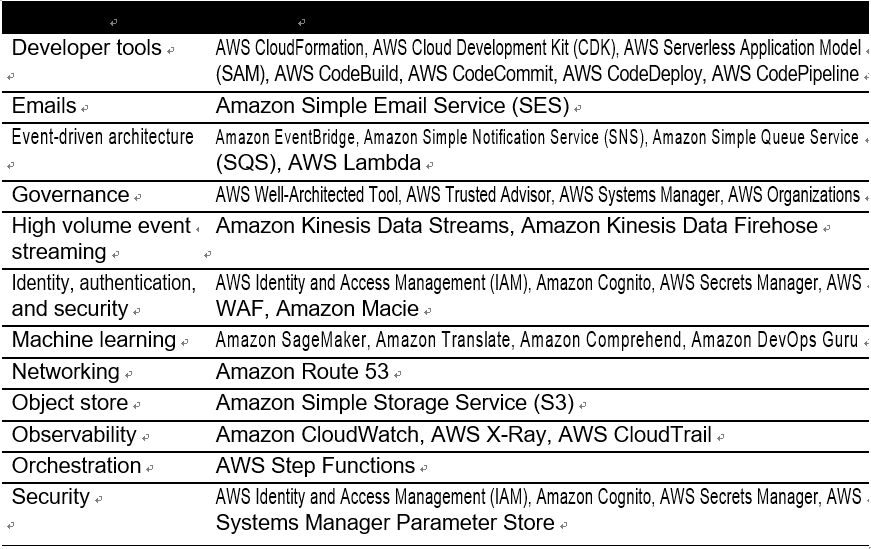Why Is AWS a Great Platform for Serverless? – Introduction to Serverless on AWS
Why Is AWS a Great Platform for Serverless?
As mentioned earlier in this chapter, although the term serverless first appeared in the industry in around 2012, it gained traction after the release of AWS Lambda in 2014. While the large numbers of people who jumped on the Lambda bandwagon elevated serverless to new heights, AWS already had a couple of fully managed serverless services serving customers at this point. Amazon SQS was released almost 10 years before AWS Lambda. Amazon S3, the much-loved and widely used object store in the cloud, was launched in 2006, way before the cloud reached the corners of the IT industry.
This early leap into the cloud with a futuristic vision, offering container services and fully managed serverless services, enabled Amazon to roll out new products faster than any other provider. Recognizing the potential, many early adopters swiftly realized their business ideas and launched their applications on AWS. Even though the cloud market is growing rapidly, AWS remains the top cloud services provider globally.
The Popularity of Serverless Services from AWS
Working closely with customers and monitoring industry trends has allowed AWS to quickly iterate ideas and launch several important serverless services in areas such as APIs, functions, data stores, data streaming, AI, machine learning, event transportation, workflow and orchestration, and more.
What’s in a Name?
When you look at the AWS service names, you’ll notice a mix of “Amazon” and “AWS” prefixes—for example, Amazon DynamoDB and AWS Step Functions. This confuses everyone, including employees at Amazon. Apparently, it’s not a random selection but a way to differentiate services based on their fundamental characteristics.
The most popular and relevant theory suggests that services with the Amazon prefix work on their own (standalone services), whereas the ones with the AWS prefix support other services (utility services) and are not intended to be used on their own. AWS Lambda, for example, is triggered by other services. However, as services evolve over time with new capabilities, you may find exceptions where this distinction no longer holds true.
AWS is a comprehensive cloud platform offering over 200 services to build and operate both serverless and non-serverless workloads. Table 1-3 lists some of the most commonly used managed serverless services. You will see many of these services featured in our discussions throughout this book.
Table 1-3. Popular serverless services from AWS


